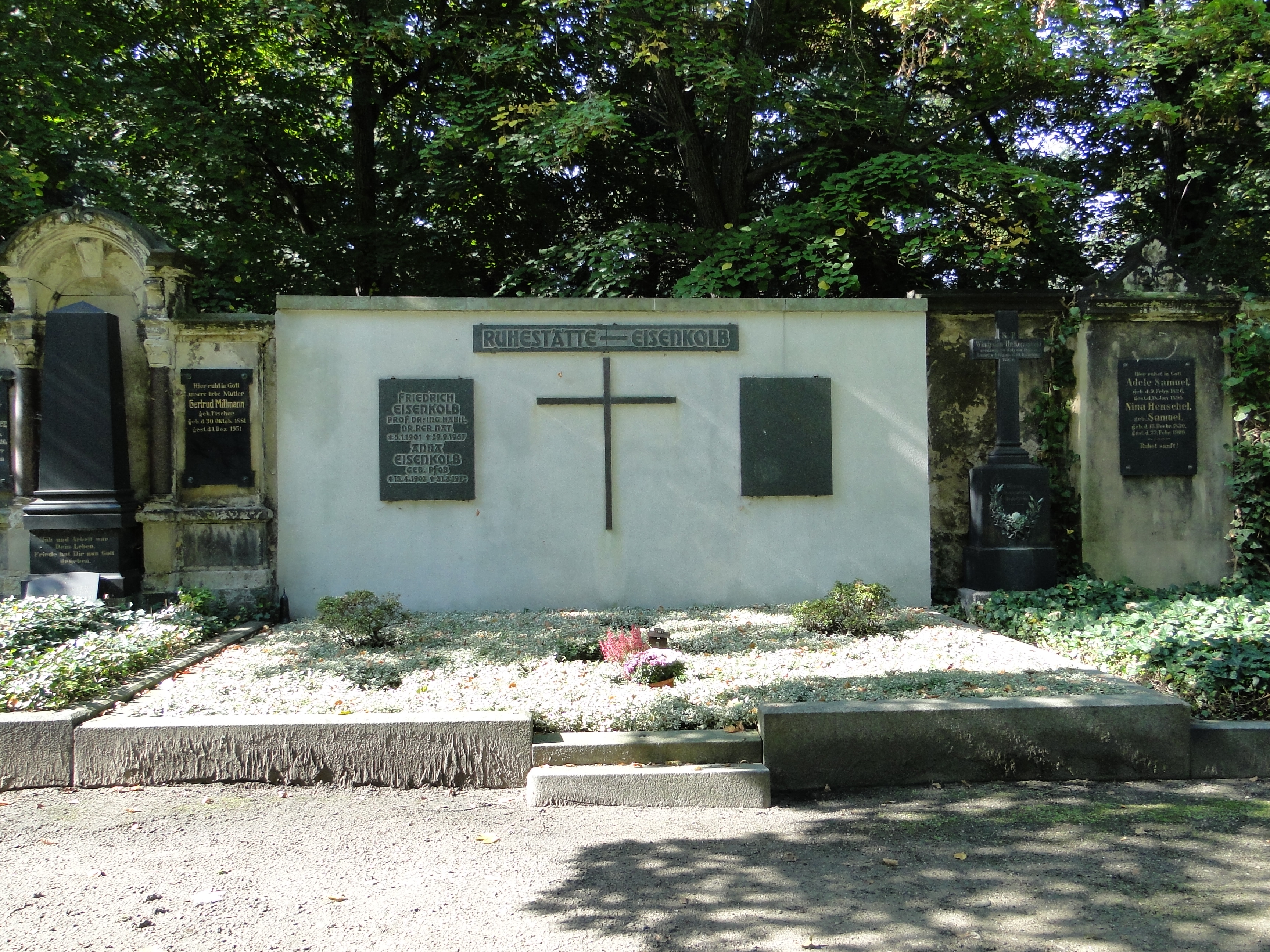Friedrich Eisenkolb on:
[Wikipedia]
[Google]
[Amazon]
Friedrich Eisenkolb (5 January 1901 – 29 September 1967) was a German
 Eisenkolb was born at the start of the twentieth century in
Eisenkolb was born at the start of the twentieth century in
metallurgist
Metallurgy is a domain of materials science and engineering that studies the physical and chemical behavior of metallic elements, their inter-metallic compounds, and their mixtures, which are known as alloys.
Metallurgy encompasses both the sc ...
.
Life
Warnsdorf
Varnsdorf (; german: Warnsdorf, hsb, Warnoćicy) is a town in the Ústí nad Labem Region of the Czech Republic. It has about 15,000 inhabitants. It lies on the border with Germany.
Administrative parts
Villages of Studánka and Světliny 1.díl ...
, at that time a small German-speaking town in northern Bohemia. His father was employed in finance security. Eisenkolb passed his School final exams in 1919 and then, from 1919 till 1923, studied Chemistry
Chemistry is the science, scientific study of the properties and behavior of matter. It is a natural science that covers the Chemical element, elements that make up matter to the chemical compound, compounds made of atoms, molecules and ions ...
and Metallurgy
Metallurgy is a domain of materials science and engineering that studies the physical and chemical behavior of metallic elements, their inter-metallic compounds, and their mixtures, which are known as alloys.
Metallurgy encompasses both the sc ...
at the Prague Poly-technical Institute. He received his doctorate in 1924 and went to work for Eisenwerke AG at Rothau-Neudek, on the Bohemian side of the Western Ore Mountains
The Western Ore Mountains (german: Westerzgebirge) is a natural region that forms the westernmost part of the Ore Mountains in the German state of Saxony. It is also part of the major landscape unit known as the Saxon Highlands and Uplands. It ex ...
. (Bohemia
Bohemia ( ; cs, Čechy ; ; hsb, Čěska; szl, Czechy) is the westernmost and largest historical region of the Czech Republic. Bohemia can also refer to a wider area consisting of the historical Lands of the Bohemian Crown ruled by the Bohem ...
had in 1918 become part of a newly created country called Czechoslovakia.) In 1928 Eisenkolb completed a second dissertation, his subject being the pickling of sheet-metals. In 1931 he took over as head of Quality, Research and Testing at the AG Karlshütten steel mill in Leskovec. In 1937 he obtained a further academic qualification (habilitation
Habilitation is the highest university degree, or the procedure by which it is achieved, in many European countries. The candidate fulfills a university's set criteria of excellence in research, teaching and further education, usually including a ...
) from the Prague Poly-technical Institute. His dissertation again concerned itself with the properties of sheet-metals. He now took a teaching professorship, and also headed up the Research and Testing institute at the Iron and Steel works at Thale in Saxony which is where he was evidently based from 1939. In the meantime the political landscape had changed, with a single-Party dictatorship
A one-party state, single-party state, one-party system, or single-party system is a type of sovereign state in which only one political party has the right to form the government, usually based on the existing constitution. All other parties ...
established in Germany in 1933
Events
January
* January 11 – Sir Charles Kingsford Smith makes the first commercial flight between Australia and New Zealand.
* January 17 – The United States Congress votes in favour of Philippines independence, against the wis ...
. Frontiers shifted and Bohemia
Bohemia ( ; cs, Čechy ; ; hsb, Čěska; szl, Czechy) is the westernmost and largest historical region of the Czech Republic. Bohemia can also refer to a wider area consisting of the historical Lands of the Bohemian Crown ruled by the Bohem ...
was forcibly integrated into Germany, starting in 1938 with the predominantly speaking German-speaking borderlands and ending during 1939 with the entire province integrated into Germany. Friedrich Eisenkolb became a member of the country's ruling Nazi party in 1940.
War, which had broken out in 1939, ended in defeat for Nazi Germany in May 1945. A large chunk in the centre of what had previously been Germany, including Saxony, was now designated as the Soviet occupation zone. In October 1949 the Soviet administered zone was refounded as the Soviet sponsored German Democratic Republic. 1949 was also the year in which Friedrich Eisenkolb was appointed Professor for Materials sciences at the Dresden University of Technology. It was a post he would retain till his retirement seventeen years later. In 1953 he was elected a full member of the Berlin-based German Academy of Sciences.
Friedrich Eisenkolb died in Dresden at the end of September 1967, aged only 66. He was buried in the city's .Technische Universität Dresden (compiled): ''Grabstätten von Professoren der alma mater dresdensis auf Friedhöfen in Dresden und Umgebung'', 2nd edition, Lausitzer Druck- und Verlagshaus, 2003, p. 22.
Published output
Friedrich Eisenkolb's name became widely known in the German Democratic Republic thanks to his multi-volume work, "Introduction to Materials Sciences" (''"Einführung in die Werkstoffkunde"'').Awards and honours
*1959:National Prize of East Germany
The National Prize of the German Democratic Republic (East Germany) (german: Nationalpreis der Deutschen Demokratischen Republik) was an award of the German Democratic Republic (GDR) given out in three different classes for scientific, artistic, ...
for Science and Technology: Class II
*1961: Patriotic Order of Merit in silver
References
{{DEFAULTSORT:Eisenkolb, Friedrich German metallurgists Academic staff of TU Dresden Recipients of the National Prize of East Germany Recipients of the Patriotic Order of Merit 1901 births 1967 deaths Nazi Party members Members of the German Academy of Sciences at Berlin People from Varnsdorf